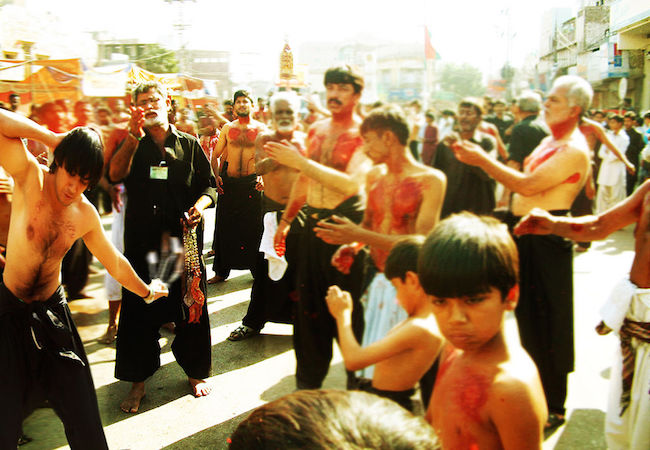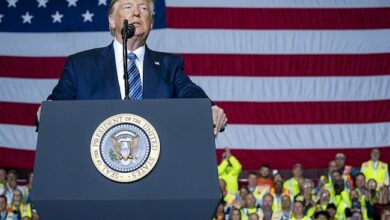
Tushar Ranjan Mohanty
At least 27 persons including 13 children were killed and 36 were injured in a suicide blast targetting a 9th Muharram (Shia mourning period) procession near a park in the Lashari area of Jacobabad District in Sindh in the evening of October 23, 2015. The blast took place at about 7:30 pm when a Muharram procession, which started from the Dargah Hajan Shah, was passing through the Lashari Muhalla (neighbourhood).
A day earlier, on October 22, 10 Shias were killed while several others received injuries when a blast ripped through an Imambargah (Shia place of worship) in the Bhaag area of Bolan District in Balochistan. The attack took place as Shias gathered at the mosque to observe Muharram. Responsibility was claimed by the Lashkar-e-Jhangvi (LeJ). Sindh Counter-Terrorism Department (CTD) official Raja Umer Khattab disclosed the LeJ had a strong network in bordering areas with Balochistan and might have been operating from there: “The LeJ network remains intact in bordering areas of Sindh-Balochistan despite arrests and killings of several militants of the group.”
LeJ had suffered major setbacks recently with the killing of top leaders such as Usman Kurd, the Balochistan chapter ‘chief’ on February 15, 2015, and LeJ ‘chief’ Malik Ishaq in the Muzaffargarh District of Punjab on July 29, 2015. The suicide bombings on ‘soft targets’ in Jacobabad and Bolan indicate LeJ efforts to reassert itself after the recent setbacks.
The Jacobabad and Bolan attacks are just a reminder of rampant sectarianism in Pakistan. The primary player, here, has been LeJ, which was formed in 1996, when it formally separated from Sipah-e-Sahaba Pakistan (SSP), which is now known as Ahle Sunnat Wal Jamaat (ASWJ). The LeJ aims to transform Pakistan into a Sunni state, primarily through violence. According to partial data compiled by the South Asia Terrorism Portal (SATP), at least 4,174 persons have been killed and another 7,240 injured in 1,431 incidents of sectarian violence since 2001. Though there has been a decreasing trend in the number of incidents in recent years, LeJ’s capacity to execute such violence remains intact. 2015 recorded 49 incidents, a drop of 46.73 per cent against the 92 incidents in 2014; fatalities, however, increased 20.52 per cent, from 210 in 2014 to 251 in 2015.
| Year | Incidents | Killed | Injured |
|---|---|---|---|
| 2001 | 154 | 261 | 495 |
| 2002 | 63 | 121 | 257 |
| 2003 | 22 | 102 | 103 |
| 2004 | 19 | 187 | 619 |
| 2005 | 62 | 160 | 354 |
| 2006 | 38 | 201 | 349 |
| 2007 | 341 | 441 | 630 |
| 2008 | 97 | 306 | 505 |
| 2009 | 106 | 190 | 398 |
| 2010 | 57 | 509 | 1170 |
| 2011 | 30 | 203 | 297 |
| 2012 | 173 | 507 | 577 |
| 2013 | 128 | 525 | 914 |
| 2014 | 92 | 210 | 312 |
| 2015 | 49 | 251 | 260 |
| Total | 1431 | 4174 | 7240 |
The elimination of top ranking LeJ leaders has clearly not deterred the group, as 2015 has witnessed some of the gravest sectarian attacks, most prominently including, in addition to the Jacobabad and Bolan attacks:
May 13, 2015: At least 45 Ismaili Shias were killed and 24 were injured when unidentified militants opened fire on their Bus in Safora Chowrangi area near Dow Medical College in Gulshan-e-Iqbal Town of Karachi, the provincial capital of Sindh.
February 13, 2015: At least 22 Shias were killed and another 50 were injured during a gun and bomb attack at an Imambargah in the Phase-5 locality of the Hayatabad area in Peshawar, the provincial capital of Khyber Pakhtunkhwa (KP) when suicide attackers and gunmen – dressed in Police uniforms – attacked worshippers offering Friday prayers.
January 30, 2015: At least 61 Shias were killed and 50 were injured in a bomb explosion at Karbala Maula Imambargah in the Lakhi Dar area of Shikarpur District, Sindh.
Sectarian strife has afflicted Pakistan virtually from the moment of its birth, but has escalated continuously since 1979, with the then President General Zia-ul-Haq’s ‘Islamicisation’ of Pakistani politics. Shias resisted this process as the ‘Sunnification’ of Pakistan, since most of the laws and regulations introduced were based on Sunni Fiqh (Jurisprudence). Notably, in July 1980, 25,000 Shias gathered in Islamabad to protest the Islamicisation laws. But the more the Shias protested, the more were they targeted, and the strife widened. The violence worsened after September 11, 2001, and the expulsion of the Taliban from Afghanistan, leading then President Pervez Musharraf to ban some 104 terrorist and religio-extremist groups, including the LeJ and SSP.
The horror of sectarian violence increases especially when the month of Muharram approaches each year. Muharram includes a ten day period of mourning observed by the Shias at the death of the family of Imam Hussain, the grandson of the Prophet, at the battle of Karbala in 680 AD, at the hands of the Umayyad Caliphate.
Purportedly, the Federal and provincial Governments in Pakistan had made ‘fool proof security arrangements’ for Muharram this year. The Sindh Government had imposed a ban on pillion riding in Karachi, Hyderabad, Sukkur and Larkana. Cell phone services had been suspended in major cities, including Karachi, as a security measure during the observance of Muharram. The Sindh Government had allocated more than PKR 100 million for overall security during the month. A total of 27,942 personnel had been deployed in Karachi alone. Of these, 18,557 were in static deployments, 1,661 were located at pickets, 5,724 on Police vans, and 2,000 as a Reserve Force in the metropolis. Similarly, 6,294 Policemen had been deployed in the Hyderabad range; 2,276 in Mirpurkhas; 7,623 in Benazirabad; 9,488 in Sukkur; and 10,791 in the Larkana Range. The Sindh Government had declared 1,229 majalis (religious gatherings), 384 matmi (mourning) processions and 188 tazia (replica’s of Imam Hussain’s tomb) processions, as ‘most sensitive’ all over the Province, and announced a three layer security cordon for processions and majalis.
Among the 36 Districts of Punjab, 12 Districts – Lahore, Rawalpindi, Jhang, Rahimyar Khan, Gujranwala, Faisalabad, Bhakkar, Multan, Dera Ghazi Khan, Bahawalnagar, Chakwal and Pakpattan – were also declared “most sensitive”.
A ‘comprehensive security plan’ had also been prepared for Imambargahs and Ashura (the 10th Day of Muharram, on which Imam Hussain was killed) processions in Balochistan and its capital Quetta. Balochistan has experienced continuous violence and targeted killings of Shia Hazaras. Speaking at a Press Conference last week, Imtiaz Shah, Deputy Inspector General, Quetta, told the media that over 5,000 security personnel, including those from the Frontier Corps and three battalions of the Army, were deployed around Imambargahs and along the routes of mourning processions. Another three Army battalions would remain on stand-by. Senior Police officers aboard two helicopters would monitor the main Muharram processions on the 9th and 10th day of mourning, while around 2,500 Policemen and personnel of law-enforcement agencies had already been deployed at 56 Imambargahs and another 14 places where women’s Majalis are held. 23 Imambargahs in the city had been declared ‘very sensitive’.
Similarly, the KP Police had declared Peshawar, Hangu, Kohat and Dera Ismail Khan as the most sensitive Districts for Muharram. According to a statement issued by the Police, 429 Muharram processions were to be taken out in the Province, and 940 majalis were authorized during the month. The Police had identified 129 ‘trouble spots’ on procession routes across the Province. The provincial capital has 67 Imambargahs, from where 121 processions were to be taken out on the 9thand 10th of Muharram.
Despite claims of all these ‘fool proof’ arrangements, sectarian terrorists have succeeded in engineering two major strikes.
At least part of the problem has been the long standing support sectarian formations have received from the larger Sunni community and from state agencies. Malik Ishaq, the LeJ chief, before his killing on July 29, 2015, had benefited from the Punjab Government’s financial assistance ever since Shahbaz Sharif took charge as Chief Minister of the Province in 2008. Malik Ishaq also allegedly received a monthly stipend from the Punjab Government during his imprisonment. Punjab Law Minister Rana Sanaullah confirmed the disbursement but clarified that it was given to Ishaq’s family, and not to him, as per Court orders. Upon further investigation, however, it was discovered that there was no such Court order pertaining to the matter. No such disbursement was on record during President Musharraf’s tenure.
Meanwhile, on September 20, 2015, the Sindh Government received details about 62 banned sectarian organisations from Federal authorities. Bank accounts of 13 of these had been frozen and offices of just nine had been sealed. In a report sent to the Chief Minister Office, Officials in Interior Ministry (MoI) mentioned that the Ministry had sent some specific details of the organisations to the Province for further action. They stated that the MoI had also sent category-wise sketch details of the banned groups. Forty-three such organisations were listed in the ‘A’ category, 12 in the ‘B’ category and seven others in the ‘C’ category. Referring to the report, the officials added that 17 organisations among the 43 had been categorised under ‘anti-state terrorism (armed and anti-state)’. However, the bank accounts of just one of these had been frozen.
Meanwhile, officials disclosed, intelligence agencies informed MoI about the re-emergence of 13 banned groups in Sindh. Five such groups — the most in a District in Sindh — had re-emerged in Mirpurkhas alone. Three each were documented to have resurfaced in Hyderabad and Korangi, and two in Karachi West.
The failure of the state to rein in sectarian terrorist formations is not surprising. Pakistan has long supported Sunni sectarian and terrorist groups as instruments, both, of foreign policy and of domestic political management. Efforts by state agencies to rein in some of these groups remain selective and, at best, only partly effective. Sunni groups with ties to state agencies continue to enjoy substantial freedom of operation to act across national borders, as well as at least a wink and a nod for some of their domestic (sectarian) activities.
Tushar Ranjan Mohanty is a Research Associate, Institute for Conflict Management




